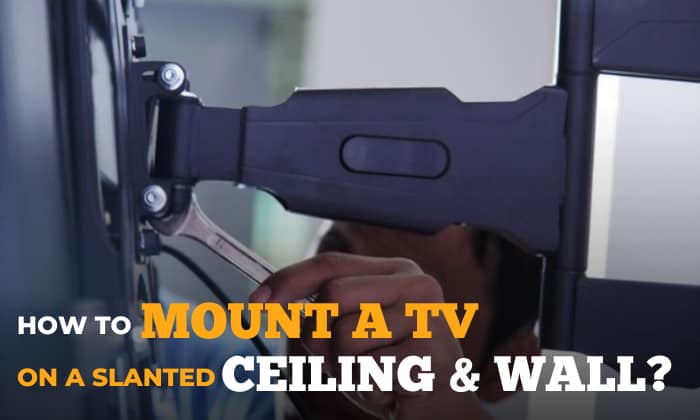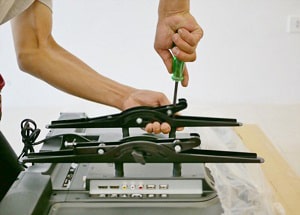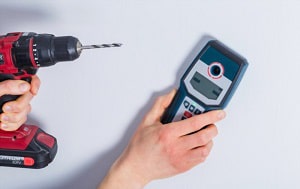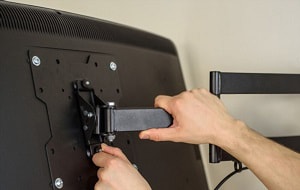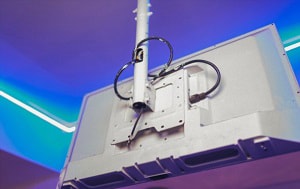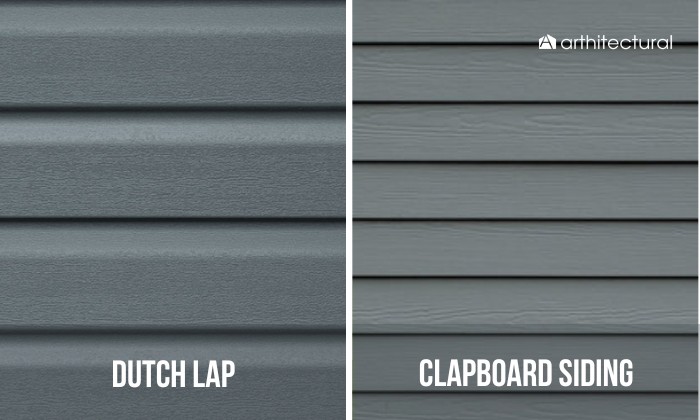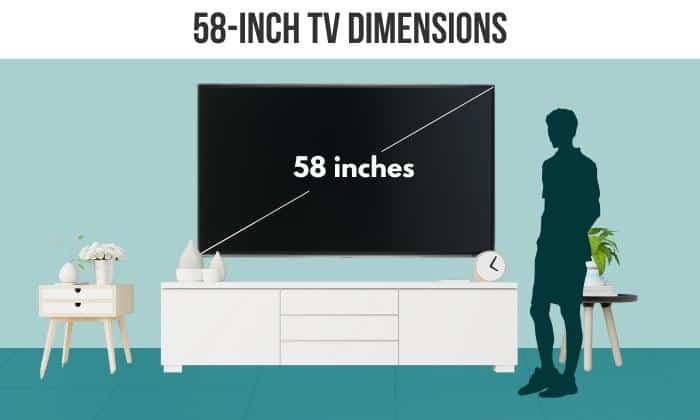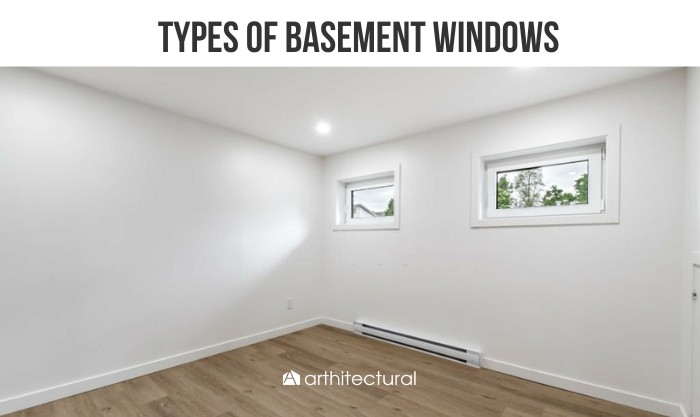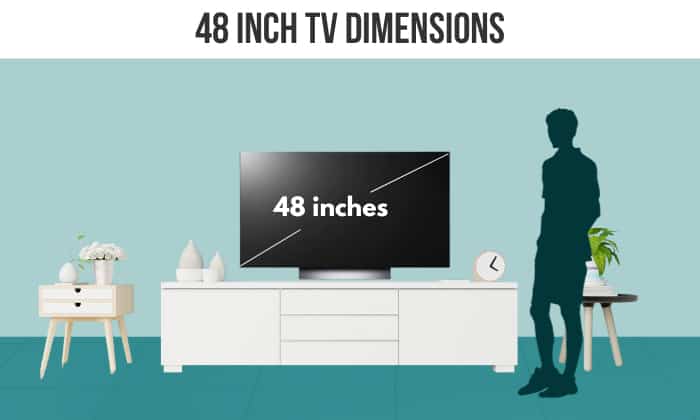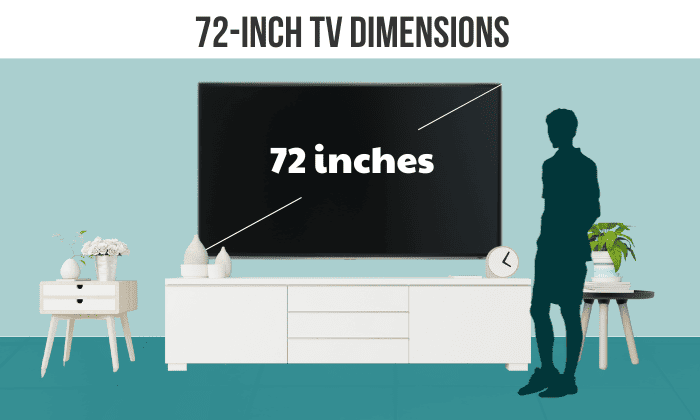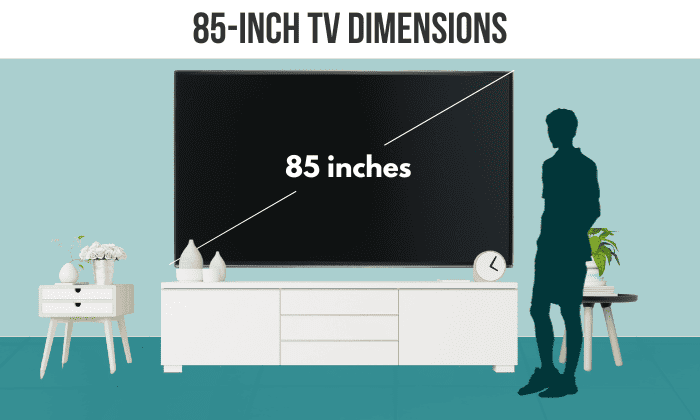Slanted ceilings can open many doors for ingenious design ideas, from comfy reading corners to airy skylights. In addition, they can make a room feel cozier and more welcoming – the ideal features for a perfect place to unwind.
However, the sloped surface can also present many challenges, the most notable of which is installing fixtures like TV. As a result, these ceiling types may seem undesirable for those who want entertainment to always be at their fingertip.
Fortunately, once you learn how to mount a TV on a slanted ceiling & wall, you’ll realize that the process is actually quite easy.
Table of Contents
4 Steps to Mount a TV on a Slanted Ceiling & Wall
What to prepare
- Slanted wall TV mount brackets
- Stud finder
- Pencil
- Power drill
- Measuring tape
- Ladder
Step 1: Attach the suitable mounting brackets to the TV
As TV designs vary based on manufacturers and models, it comes as no surprise that their mounting slots (VESA holes) may differ as well. For this reason, you need to inspect the electronic device first before making any move.
- Flip the TV face-down on a soft surface to have a closer look at its back.
- Inspect which VESA hole patterns you have. Do so by measuring the distance between the top and bottom holes. For TV without VESA-compliant holes, you’ll need to attach a VESA adapter
- Attach the sloped ceiling TV mount bracket according to the manufacturer’s instructions. Ensure that the fasteners are perfectly aligned and securely attached to the back of the screen.
Step 2: Prepare the mounting surface
In order for the mounting plate to be firmly fixed to the ceiling or wall, the surface needs to be strong enough to handle the weight. Otherwise, the TV’s weight will tear the mounting plate right down, regardless of how tight your screw bolts are.
In this case, you’d want to mount a TV on a slanted wall or ceiling via the studs.
- Climb on a ladder for easy reach if the mounting surface is too high up.
- Identify the location of the studs, which are usually placed 16 inches apart, with a stud finder. Turn on the device and keep pressing the power button as you go across the wall. Once you hit the stud, the device will go off.
- Use a pencil to mark the studs’ location. Heavier TVs should have two studs to hang securely. That said, the number may also change depending on whether your mounting plate is a single- or double-stud version.
Step 3: Install the mounting plate to the slanted ceiling & wall
Before fixing the plate to its place, you first need to check whether the surface is even. Otherwise, it’ll be quite difficult to install the mounting plate so that it’s stable and flush against the wall. If it’s not, find a better position to hang a TV on a slanted wall.
- Place the mounting plate so that its mounting holes align with the studs.
- Using a pencil, mark on the wall where the screws need to be to make it easier for you to drill the bolts into the right place.
- If you want to be certain, you can trace the plate with the pencil. This will help you notice if the mounting hardware is in the right place or not.
- Drill pilot holes into the marked spots. Aside from making it easier to screw the bolts in, these holes will ensure correcting mistakes will be less of a hassle if problems do occur.
- Align the TV mount for slanted wall with the previously traced outlines/pilot holes. Then, screw the bolts into the pilot holes with the drill.
Step 4: Assemble the mounting kit
While this step is quite simple, you’ll need extra help from someone else. This is because someone has to support the TV’s weight while you assemble everything.
- Fasten the screws tightly to ensure the mounting kit doesn’t rip apart from the electronic device’s bulk.
- Check whether the TV and the mounting kit fit securely. If not, identify where the issue is and make adjustments accordingly.
- Tilt the TV on the slanted ceiling TV mount until you can comfortably watch it from your preferred spot.
FAQs
Types of TV Mount for Angled Wall and Slanted Ceiling
An essential part of DIY hang TV from ceiling projects is selecting the right mounting kit. Aside from selecting products that are designed to accommodate sloped angles, you also need to pay attention to the specific type you purchase.
Not sure which one to pick for attic wall and sloped ceiling? Check out the overview below.
- Motorized ceiling TV mount
My go-to recommendation for slanted ceilings and walls, these flip-down models can be tilted from afar with a remote or phone app. In other words, you won’t have to reach the tall TV to adjust its angle for easy viewing—everything can be done while you’re resting in your seat or bed.
In addition, some motorized ceiling mount models even have memory settings that automatically tilt the screen to your preferred position. This can come in handy if you like placing the unit flush to the slanted wall/ceiling when it’s not in use.
- Manual full-motion TV mount
If you don’t mind getting up from your couch to adjust the TV position, these manual varieties will suffice. As indicated in the name, full-motion mounts allow you to adjust the TV’s distance from the wall, as well as its tilting and swiveling angle.
However, different products will have varying degrees of swivel and tilt, so check the product specifications carefully first. Similar to the motorized versions, these manual TV mounts can be retracted back to the wall for those who want to save space.
- Tilt-only TV mount
As I’m sure you’ve already guessed, these screen mounts can only be tilted left or right. Depending on the price range, some products don’t even let you tilt the screen backward, which can be quite restricting for sloped-surface mounted units.
In addition, you can’t adjust the tilt-only TV mounts’ height or swivel either. Unless you’re certain that you won’t require drastic adjustments to your setup, I doubt these mount types are the best choice for mounting screens on slanted ceilings and walls.
Are ceiling-mounted TVs safe?
Yes, ceiling-mounted TVs are safe, provided that the conditions below are met.
First, when you hang a TV from the ceiling, make sure to use the proper hardware and follow my instructions correctly. Note that your screen should be suitable for mounting from such a high surface; check with the manufacturer if you’re not certain about this.
In addition, the ceiling itself will have a say in how secure your setup is. For instance, ceiling tiles and hardboards are often too flimsy to keep the heavy unit in place. Again, it would help if you learned how much your ceiling can handle before installing anything on it.
Finally, make sure that you don’t mount the TV anywhere near the fireplace. While the distance from the fireplace to the electrical unit may seem large enough, the intense heat can still damage the screen.
What is the proper height to hang a TV?
A rule of thumb is that the TV should always be around your eye level when hung on the wall. This means that the recommended height will change depending on whether you’ll be mainly sitting, lying, or standing when watching TV.
Furthermore, because television sizes vary drastically, their ideal height to be around your eye level will change as well. Let’s say that your screen size is 55”, then the distance from the floor to its center should be 61”. For extra-large 70” screens, increase the height to 67”.
Remember that these are just rough estimates and not definitive numbers. For example, the size of your furniture can also affect the ideal height for hanging a TV.
Can I mount a TV at an angle?
Yes, you can, regardless of whether it’s a vertical or 45 degree wall. As long as you have the right hardware, such as a retractable angled ceiling TV mount, hanging the TV at an angle is completely possible.
Conclusion
In short, regarding how to mount a TV on a slanted ceiling & wall, the easiest approach is to utilize a mounting bracket with tightening arms. The hardware should accommodate the sloped surface, meaning it must be able to tilt up/down enough to offset the angle.
We hope that this instruction has been helpful to you. Always check whether your ceiling and wall can handle the TV’s weight before you start mounting anything heavy to it.
Good luck with the installation process. Comment below if you need to ask us anything about the procedure.
Read more: Can you locate a TV in front of the window?

Hi, I am Roseanne Jones, an aspiring home designer that wants to make you feel more at home with your new house.With nearly five years of redecorating old residents and arranging new ones, I am confident that I can give you the best advice on your lovely place.


